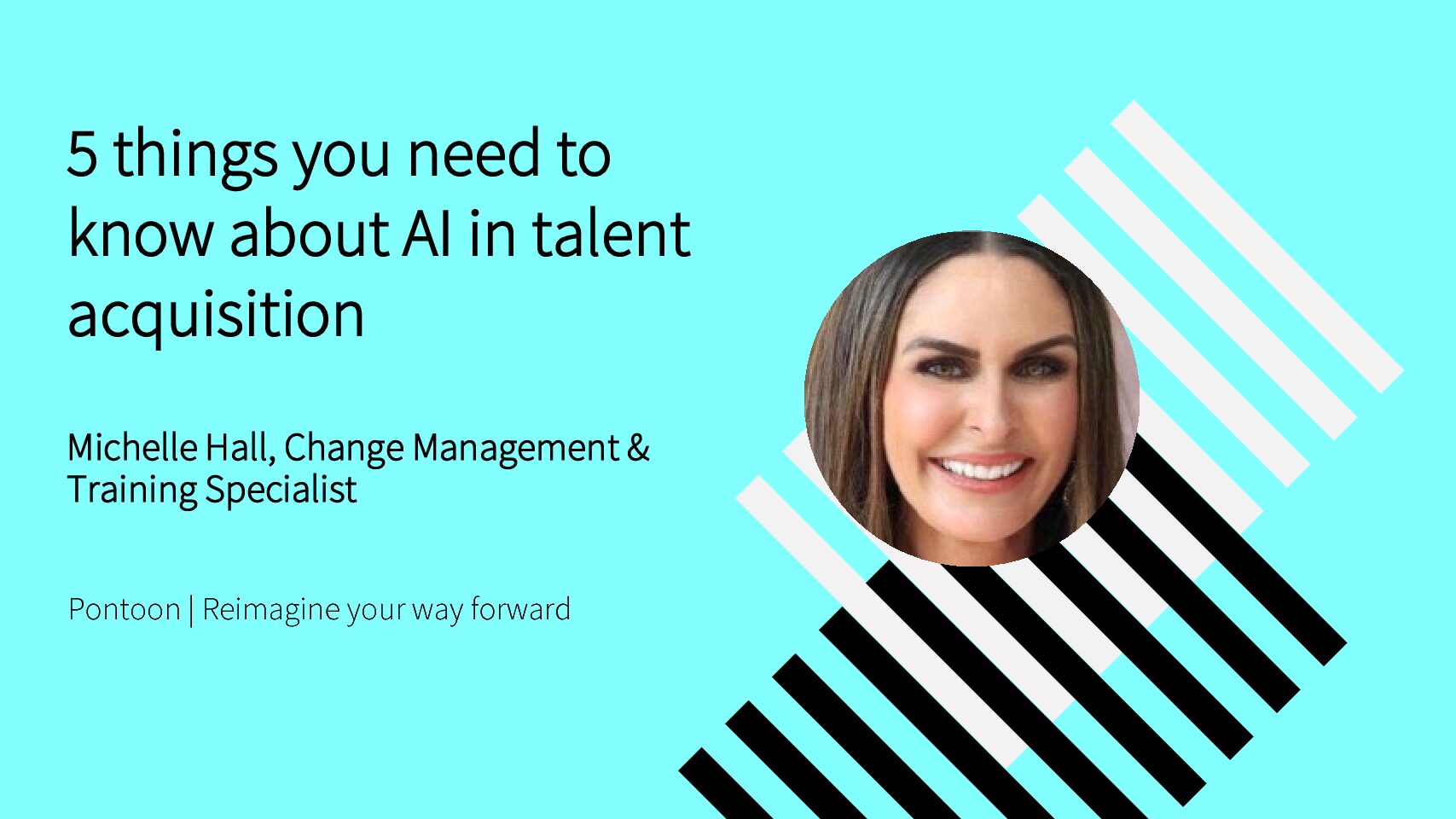Mastering digital transformation: 5 strategies to address tech change resistance
Organisations globally are exploring how to use emerging technologies to simplify processes, enhance experiences and boost predictive capabilities. The adoption of AI technology is happening gradually across businesses, increased by strategies developed to operationalise and apply AI successfully. Reports show that 60% of larger companies are likely to have a holistic AI approach in place already.
These advancements can bring about transformative changes in how businesses operate and deliver value to their customers. However, it is crucial to remember that such changes are often met with opposition from the workforce, which is a natural response rooted in human nature. Organisations can minimise resistance among impacted workers by planning effectively for introducing new tech and proactively addressing opposition before it becomes a concern.

Emily Brown, Change Manager
Decoding resistance dynamics

Laura Hendriks-Zeller, Director of Change Management, Communications and Training
The first step is for organisations to understand what type of resistance they are dealing with. Then, they can engage in effective and deliberate planning to promote new technologies and harness their benefits.
Opposition to change often stems from fear of the unknown, negative past experiences, disruption of established routines, or a perceived loss of control. It can be categorised into four buckets:
- Active resistance occurs when the impacted audience openly rejects the change by expressing displeasure through, for example, protests and strikes. They intend to disrupt the process of change-related activities.
- Passive resistance is when the affected workers show opposition by seemingly accepting the change but not supporting it. This can include, for instance, not engaging in the tech implementation process, refusing to participate in learning sessions, spreading rumours about the technology, etc.
- Emotional resistance happens when the impacted audience experiences strong, negative emotions toward the change – such as fear, frustration, anger, or resentment – which delay their acceptance of the newly implemented tech and cause low performance.
- Rational resistance occurs based on the affected workers’ logical reasoning about the change. Their resistance may stem from weighing its pros and cons, such as the feasibility, impact, and consequences should anything go wrong.
Decoding the type of resistance you are dealing with is crucial to figure out how to minimise repercussions. While it’s essential when introducing any new technology or process, it’s probably even more imperative now when artificial intelligence is becoming our everyday reality. This tech brings additional concerns stemming from an insufficient understanding of what it can do, and how firms plan to adopt. For many, it’s still a bit of a futuristic concept, and – as with any other tool that automates and speeds up processes – people fear losing their jobs.
Addressing workforce concerns fosters adoption
Research reveals that 23% of talent acquisition professionals fear being replaced by AI, and only 15% believe humans are essential to recruitment. Such sentiments can easily translate to change resistance if not adequately investigated and addressed. For example, Pontoon’s experience with AI-powered bots shows that launching a sourcing bot did not reduce the headcount. Quite the contrary, it increased the number of sourcing experts almost ten times. Organisations need to debunk misconceptions ahead of time and cooperate with their workforce to find areas where tech can ease everyday workloads. The increased focus on connecting tools to strategic business goals makes technology engrained in the companies’ culture. This is why ensuring painless adoption is crucial.
Managing resistance for limited impact
Planning for resistance – whether digital, process-oriented or other – saves valuable time in the change journey. Rather than reacting to the opposition, employers can proactively anticipate where workers may struggle and iron out issues before the change goes into effect. Resistance planning can help jump-start the process with key stakeholders. First, it allows for identifying potential pockets of resistance and then designing a plan to prevent it. Important strategies to keep in mind when drafting a change plan to reduce potential opposition include:
- Assess Impact. Review the impact assessment and evaluate how the new tools affect stakeholders and their sentiment towards change. This can vary per individuals, teams and internal business divisions, so it’s essential to get to the bottom of possible issues and tailor communication and learning accordingly.
- Communication. Very often, a change is communicated in too much or too little detail. Creating a communication plan that prioritises what the targeted group needs to know makes the information more absorbable. Utilising different communication pathways and preferred methods can help ensure the message reaches all affected stakeholders and, more importantly, it sinks in. Relaying the “what’s in it for me” and the “why” to the impacted group can help receive buy-in early in the change process.
- Learning. Cater to the impacted audience’s learning styles and utilise various ways of learning about the new tools, for example, design demos, user guides, expert panels etc. Tailoring the change management process and making learning accessible will increase adoption and performance once the new tech goes live. To ensure successful adoption, every impacted individual should receive information on how the tech will affect their everyday role.
- Feedback mechanisms. Provide a platform for the impacted workers to express their thoughts on the proposed change. This can effectively reduce resistance and enhance the change process. By allowing the audience to voice their concerns, we can address any resistance directly and foster a collaborative environment with those affected. A change agent network is an excellent way to support championing adoption.
- Empathy. Understand how the impacted audience will react to the change to allow thoughtful strategising before go-live. Showing genuine care during the change interactions can significantly decrease the workers’ resistance and make them feel valued.
Studies indicate that individuals genuinely committed to change are statistically 30% more inclined to adhere to it. Hence, prioritising resistance planning as part of the change management journey becomes indispensable to ensure a seamless transition.
Looking beyond artificial intelligence
It’s fundamental to remember that while everyone’s eyes turn to AI, other – more traditional tech – can also be a source of resistance. It’s also new, going against how things were done so far, disturbing the everyday status quo, and more. All change requires an adjustment and a shift outside of a comfort zone. The impacted individuals must know what will change and the future-state benefits for themselves and the business.
For one of Pontoon’s clients in North America, we successfully implemented an MSP solution that included the adoption of a brand-new VMS. Instead of waiting for the anticipated resistance, our team took a proactive approach. They conducted an intro session, followed by an extensive informational campaign focused on the impending change. This additional communication layer allowed us to show extra care and consideration throughout the process. Further, we identified client representatives who would be directly affected by the change and engaged them as subject matter experts early on.
The client’s subject matter experts (SME) gathered valuable feedback during various change activities throughout the technology implementation phase. They actively participated in activities such as reviewing a demo of the VMS, attending the live design sign-off session, and taking part in solution validation. To further enhance buy-in from hiring managers who were not directly involved in the process, the client’s SMEs created a personalised ‘What’s in it for Me’ content that was later added to the hiring manager training deck. Through this, we ensured that all stakeholders felt included and understood the benefits of the change. This comprehensive approach significantly reduced resistance and fostered a sense of collaboration throughout the entire change initiative.
VMS automation enables process efficiencies
The VMS platforms’ automation and AI enhancements can reduce work hours in the contingent labour management cycle by 10 – 35%. With other benefits, including shorter time-to-hire, improved efficiencies, and better supply chain management, it’s not surprising that adoption of VMS in mid-market firms grew by 20% globally between 2019 and 2021. Augmenting tech into everyday processes is going to be even more widespread, hence the importance of driving internal buy-in through digital resistance planning.
Final takeaways
Resistance is a natural occurrence when introducing changes, including technology augmentation. However, employers can effectively address it by proactively investigating where and why it can occur. They must emphasise change benefits, catering to the audience’s learning styles and using their preferred communication methods. Creating a change journey that resonates with everyone and fosters a positive attitude towards digital transformation is essential. The success of technology adoption hinges on user acceptance. Without gaining internal buy-in, the potential benefits of any tech will remain unrealised.
Technology solutions have emerged as critical allies in a world of constant disruptions, allowing companies to stay agile and adapt to shifting workforce requirements. As part of our advisory function – Pontoon Instinct – and specifically within the Technology & Integration practice – we help customers scope, build and deploy technology solutions that best suit their business requirements. This includes supporting selection, implementation, and adoption. Contact us through the button below if you wish to find out more.
Related Post
Exciting advancements in generative AI are creating a buzz across all industries, and it's no surprise that talent acquisition companies are keeping a close eye on these developments. Surveys reveal ...




